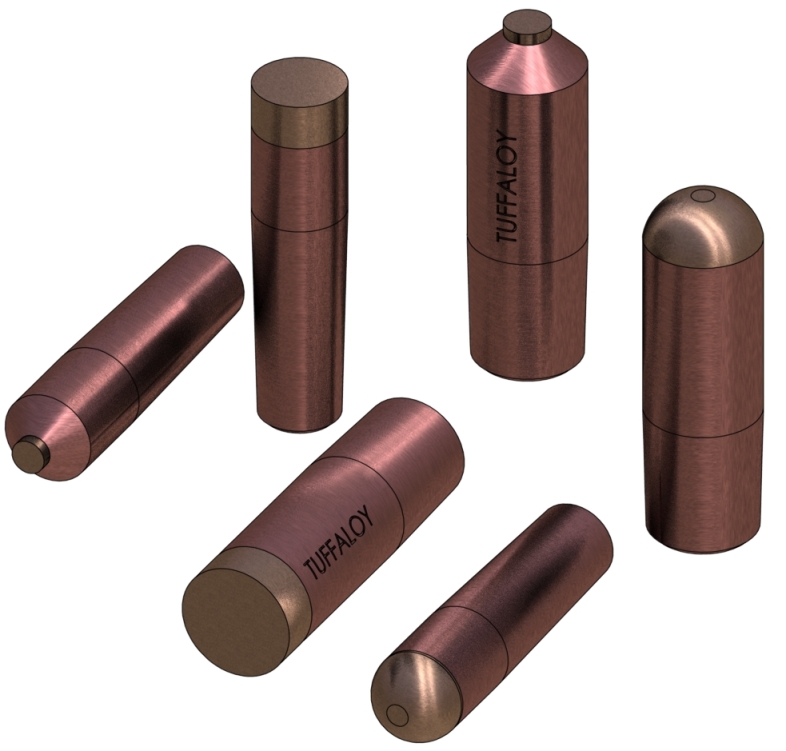Resistance brazing is not spot welding so the electrode face geometry does not have to concentrate the heat into a small area. Frequently the electrode face is machined to conform to the surface that it is in contact with. Frequently the electrode will contact the entire work piece surface. In some cases the electrode faces is milled out. The work piece is nested into the face of the electrode in order to insure proper part placement and alignment. A small vacuum is sometimes pulled through the center of the electrode to hold the part in place before the electrode closes. This is very common for small part brazing.
The electrode material is frequently RWMA Class 2. It could be ETP copper and in many cases carbon electrodes are used.

When resistance brazing contact materials, refractory faced electrodes RWMA Class 11, 13 and 14 as well as Class 2 are commonly used.
The first choice of course should be the least expensive, stocked product. After the coppers that would be Class 2. It is easily machined to fit shapes and is stocked as electrodes and bar stock.
I am not sure of carbon electrode pricing and availability. It should fit in here somewhere for large amounts of heat between Class 2 and the refractories.
If the resistance braze generates large amounts of heat for a long time. (Some resistance brazes are 10 - 20 seconds or longer - not cycles. I have seen some over one minute long.) The electrodes can get very hot. If the Class 2 is struggling (excessive wear and sticking) then turn to the refractory faced electrodes Group B, Class 10 – 14. The heat and temperature will not phase them. The only caution is that they are brazed assemblies. Their face can glow red but don’t let that red reach the braze joint holding them on the base material. To keep the braze joint from failing pulse the heat once in a while momentarily, if needed.
Of the refractories Class 10 is not stocked and not readily available.
The first choice should be Class 11. This is a copper tungsten material available as faced electrodes and bar stock. It is machinable and heat resistant with great strength and wear at high temperatures. This is the best choice for most that need a refractory material, when Class 2 can't handle the heat or sticks too much. Class 12 does not add that much heat resistance for the cost. Class 14 ups the price substantially and is worth it if you have to have it. But most can get by with Class 11 for the cost difference. Don't forget hard Carbon. It is pretty forgiving and works well and glows red for a long time.
Class 12 is the next level of copper tungsten with more tungsten and less copper. It also is stocked as faced electrodes and bar stock. It has a little more strength and heat resistance than Class 11 and is still machinable.
Class 14 would be the next level of heat and strength resistance. This is pure Molybdenum. Very strong and heat resistant. It is machinable with care. Costs are increasing and stock is not as available with this material.
Class 13 very heat resistant and strong. This is pure tungsten. Heat does not bother this material. Very costly, Not machinable, Must be ground, Attachment by mechanical means is best. This is for specialty applications only.
In summary use copper, or copper alloy – Class 2 when possible
Long resistance brazes mean heat buildup this pushes the capabilities of standard material and then one turns to:
Hard carbon is a candidate for long hot welds
RWMA Refractory Group B Class 10 – 14 are candidates
Class 11 (Copper/Tungsten) is most frequently used.
Class 14 (Molybdenum) in some applications
Class 13 (Tungsten) as a last resort if it is the only electrode that will work
Reference: CMW Inc. Product Resistance Welding Products Catalog
Tuffaloy Products Catalog
RWMA – Resistance Welding Manual 4th Edition

